Travel, World War I »
Rest in Peace
November 28, 2017 | 2 Comments | Betsy Woodman
The cemeteries of the Western Front tell a brutal truth: the sheer scale of the killing in World War I. You wander down row upon row upon row of identical white headstones or crosses, gaze up at commemorative walls listing name after name after name. Huge monuments in honor of the dead went up in Belgium and France in the 1920s and 1930s, and stonemasons were still carving names on them when the second world war broke out in 1939.
In Belgium, Tyne Cot Cemetery and Memorial for the Missing is the final resting place for 11,900 servicemen from the British Empire. The Memorial also names on its walls 35,000 British and New Zealand soldiers whose bodies were never found.
The architect of Tyne Cot, Sir Herbert Baker, said he wished the cemetery to have “the appearance of a huge, well-ordered English churchyard with its yews and cedars.” So, the grass is cut to a precise length and rose bushes soften and beautify the scene.
How different from the chaos in which these soldiers fought. How different from the filth and deafening noise they endured. A hundred years later, death is quiet and clean.
Are the French more apt to call a spade a spade? Their graves make you look death in the eye. On the crosses of French World War I graves, beneath each soldier’s name, is the inscription, “Mort Pour La France.” “Dead for France.”
Making even more of a statement, at the Douaumont Ossuary at Verdun, femurs and pelvises and skulls of an estimated 130,000 individuals are jumbled together in chambers visible through little windows on the outside of the structure. They are the remains of unidentified German and French soldiers.
All the cemeteries I saw on my tour were sobering, but especially those of the losers of World War I—the Germans. With a few exceptions, the treaty of Versailles forbade German graves to have white headstones, and the Belgian government would not allow them to have vertical grave markers. Therefore, at the Vladslo German cemetery, where more than 25,000 men are buried, burial sites are marked with low gray stone squares.
The names of ten, sometimes twenty, soldiers are carved on each. Their given names are typical German ones–Oskar, Heinrich, Erich, Fritz, Ludwig, Johann, Werner. Just boys, most of them, now at rest beneath flat stone squares that symbolized their defeat.
100 years later, victory and defeat seem less important than the loss suffered by mothers and fathers. German sculptor Kathe Kollwitz expressed it best in her statues, “Grieving Parents.”
Photographs Betsy Woodman

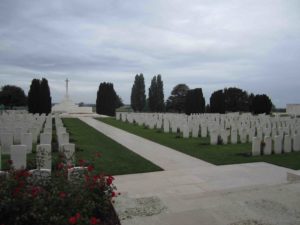
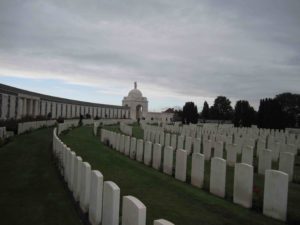
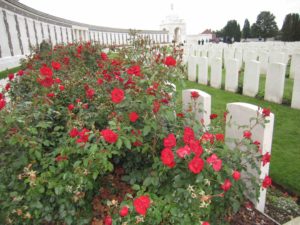
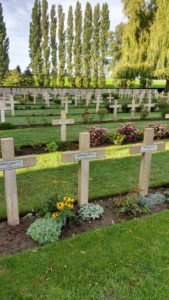
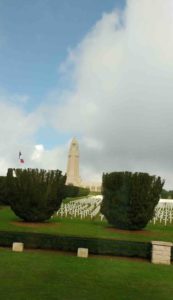
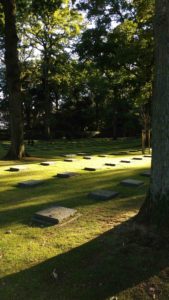
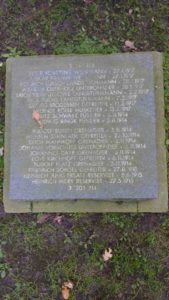
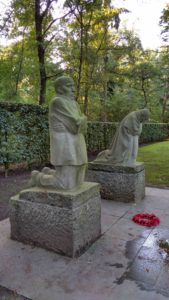




Thanks, Betsy. Death often leaves us silent, as it should.
So eloquently put, Betsy. “When will we ever learn?”